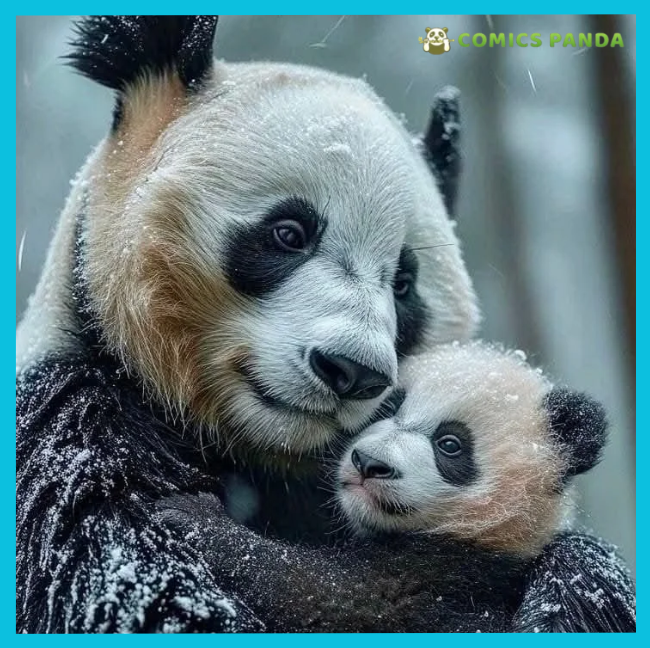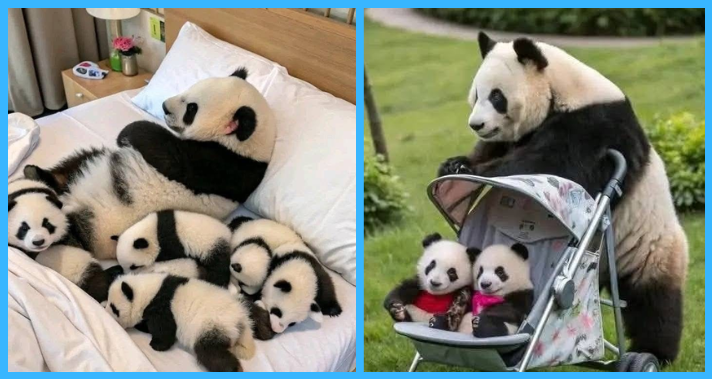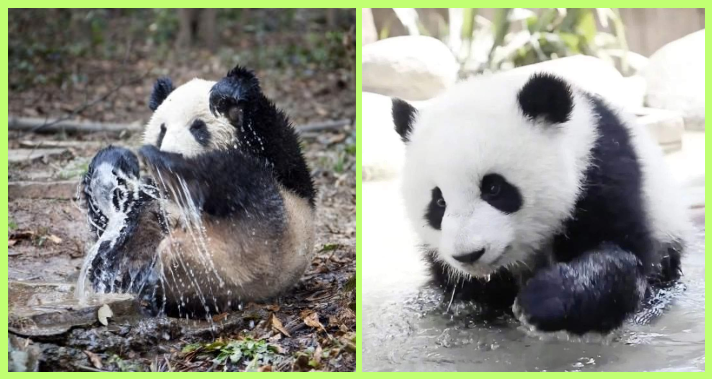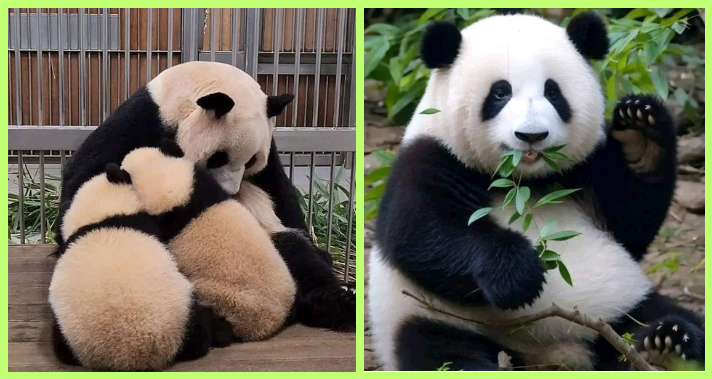Pandas are one of the world’s most popular animals, and one of the key reasons for their popularity is the black and white coloration. Their eyes are of a dark circle and their faces are round and make them look familiar at a glance. And not merely of look these black eyespots. They have a deeper meaning in nature. Scientists believe that these markings may help the pandas in the wild to survive and communicate with one another and adjust to their environment. In this blog, we will consider the mysteries of this black and white eyespots that the panda has in addition to why they really matter.
Panda’s Black and White Eyespots
The black patches around the panda’s eyes are one of the very recognizable features in the animal world. No other bear has such facial marking. These eyespots are oval splotches of dark fur covering the fur around the eyes as well as a little bit toward the cheeks. The rest of their face is white in color. This great contrast makes for a dramatic, soft look that is instantly and widely recognized and loved by people around the world. But in the world of nature animals seldom possess features without a purpose. Panda does not have bright colors, sharp teeth shows, and loud noises. Even in the wild they have their own identity which are their spots in the eye.
Panda are solitary animals, which means normally they live in solitude. They travel individually and not in groups or herds. Because of this, they need easy and straightforward forms of communication when they encounter other pandas. Their black eyespots are believed to be used in this process. The dark patches help their eyes to be more visible from a distance, particularly the foggy forests where they live. These barks can perhaps be used for other pandas to know their direction of sight. Eye contact can demonstrate such feelings as peace, warning or curiosity. The eyespots assist in the signaling of these expressions, even in low light. Many animals are covered by markings which make them look larger or stronger. Some people believe that the black eyespots that give the panda a panda look make their face look larger than it really is. This may make it seem like the panda is more confident or stronger to other animals in the wild.
#1. It’s good to see how giant panda holds baby pandas

#2. It’s very rare to see pandas in bedroom

Pandas may be docile, but they are large animals. If a possible predator sees their big face with dark eyes they may think twice before coming in for a closer look. The eyespots produce an illusion which makes the panda’s eyes appear wider and more serious and can be used to avoid conflict. The habitat of panda is dark all around. Sun is blocked by the tall trees, rocks are covered with moss, and the fog is drifting across the mountains. In such an environment, black and white colors can actually provide camouflage. White areas of a panda blend in with light areas of snow, mist or sunlit areas. The black areas are consistent with tree trunks, shadows and rocky corners.
#3. I am soft and confused

#4. Today I will do nothing and then rest

Their coloration, with its eyespots, forms part of this femininity disguise. Their face and eyes are not so distinct from a distance. Instead, the black and white become part of the natural light and dark regions of the forest. This helps panda to hide from predators or avoid unnecessary attentions. Pandas tend to live in snowy mountains during winter and they reflect sunlight very well. The sun glare can be minimized by the use of dark fur around the eyes. Just like people who play sports, dark strips placed under the eyes, is a technique designed to reduce the brightness of reflections, perhaps pandas use their natural dark fur to protect their eyes. Even if there is no snow, the sunlight in the mountains can be brutal. The black eyespots make the light reaching the sensitive area around the eyes less. This is to ensure that pandas can see well in a variety of light.
#5. When panda behaves like human

#6. When you fall but pretend it was a cool move

Another intriguing mystery is that the eyespots of pandas of different sexes can be different in both form and size. Even in old age the shape of the eyespot can undergo some modification. Some pandas have rounder circles while others have tear shaped circles that are much longer. This means that the eyespots are not quite identical in all pandas. This difference may be useful for pandas to recognize other pandas. Even though they are not social animals, they still have to find other pandas during mating season or while marking territory. Slight alterations in eyespot shape may serve like a personal identity marker.
#7. Is it Monday already I am not ready

#8. Pandas in winter season

Pandas are referred to for their docile behavior. They are not an aggressive animal unless it is threatened. The soft, rounded eyed spots are proportional to their peaceful character. They are calm in appearance, smooth in their markings, resting in their movements, and serene in their habits, and, instead of bright colors, their markings are dull. These markings make pandas seem friendly and calm, which may be a reason for less unnecessary fights between them. Since they are independent and meet few other people, peaceful non-verbal communication is essential.
#9. Baby panda learn how to climb

Even though pandas don’t express themselves in terms of facial features (much like humans) their eyes and ears are still able to convey emotion like stress, alertness or relaxation. These few changes are easier to see with the black eyespots. For example, when the panda raises his head or widens his eyes, the dark patches increase the visibility of the movement. Pandas live in high mountain forests that tend to be cold, damp and foggy. The black and white coat with the eyespots is part of their adaptation to the surroundings. Their coat not only keeps them warm, but makes it possible to stay hidden when necessary and visible when necessary. By stamping the eyespots on their bodies, nature has provided a means for the panda to survive without having to fight. They illustrate how pandas evolved in order to find a balance between safety, communication and peaceful living in a tough environment.
#10. Hug me, I am soft and confused

Panda eyespots are not merely a cute attribute as they are black and white. They are a natural phenomenon among pandas living in the wild. The eyespots are used for communication, camouflage, protection from vision and emotional expression. They have enabled the pandas to be peaceful but alert, quiet but understood. The simple outlines around their eyes are rich in meaning in nature. Besides being a symbol of beauty, the panda’s face is the product of nature’s wisdom. The eyespots remind us that even every little detail in the body of an animal has a purpose, even if it is only made to make us smile. To that end, in the event that you liked this blog, share it with everyone and come to our website to read other stories about wildlife and nature.




